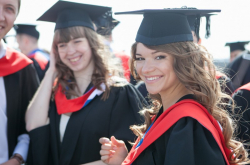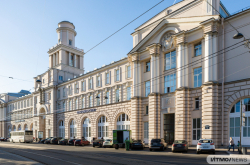RUR's headquarters is in Moscow, yet, it uses data collected by the Clarivate Analytics Company (USA) that was once part of the Thomson Reuters media holding. The pivot table is based on 20 indicators distributed into 4 areas, regardless of the university's profile. These four areas are Teaching, Research, International Diversity and Financial Sustainability. Traditionally, these indicators are based on particular quantitative data. For example, amongst indicators for the Teaching area are indicators such as academic staff per students and doctoral degrees per bachelor degrees awarded. For assessing a university's research activity, such indications as citations per academic and research staff, normalized citation impact and such are used.
These two areas define 80% of the university's score and also include the assessment of a university's international reputation in teaching and research. To do that, ten thousand specially selected respondents are surveyed. For teaching reputation assessment, they are asked are asked to choose the strongest universities in the field of teaching. For Research, the survey is conducted among renowned scientists that are indexed by Web of Science Core Collection logs. They have to choose 15 universities that they believe to be leading in a particular field of science.
The ranking's main mission is to help graduates and their parents choose a university. RUR also can be used by university students when looking for short-term programs, as well as by academic and research staff when participating in international research projects. Also, RUR is an additional tool that the university's administration, the business community or the government can use to access a university's activity.
This year, ITMO University took the 475th place by moving 10 positions up in the ranking. Its best indications were in Teaching, which allowed ITMO to take 124th place in this area.
"Our university has considerably improved its position in both teaching reputation (from 550th to 416th place) and research reputation (from 649th to 473th place), which shows that ITMO's visibility on the international academic and scientific arena has increased significantly. We are glad to notice this tendency, all the more that this indicator is quite inertial. Much alike the last year's rankings, ITMO's strongest side is Teaching, in which it rose from 152th to 124th place, thus getting into the top-150 by the quality of teaching. Amongst ITMO's other strong points we can mention an increase in such indications as research income per academic and research staff (from 356th place to 288th) and research income per institutional income (from 129th to 59th)," commented Ilya Kuftiryov, director of ITMO's Rankings Research Center.
For the past three years, USA's and Great Britain's universities hold the highest positions in the ranking. Since 2014, no less than six American universities get into the top-10, the remaining positions in the top go to British universities. The top-3 are Harvard University, Stanford University, and the California Institute of Technology.
Among Russian universities, Moscow State University was named best this year, taking 145th position in the rankings and thus being the only Russian university that got into the Golden League, i.e. the top-200. As for the top-500, it also included National Research Nuclear University MEPhI (231th), Tomsk State University (256th), Novosibirsk State University (372th), Saint Petersburg State University (414th), Tomsk Polytechnic University (420th), Peoples' Friendship University of Russia (456th) and N. I. Lobachevsky State University of Nizhny Novgorod (494th).





